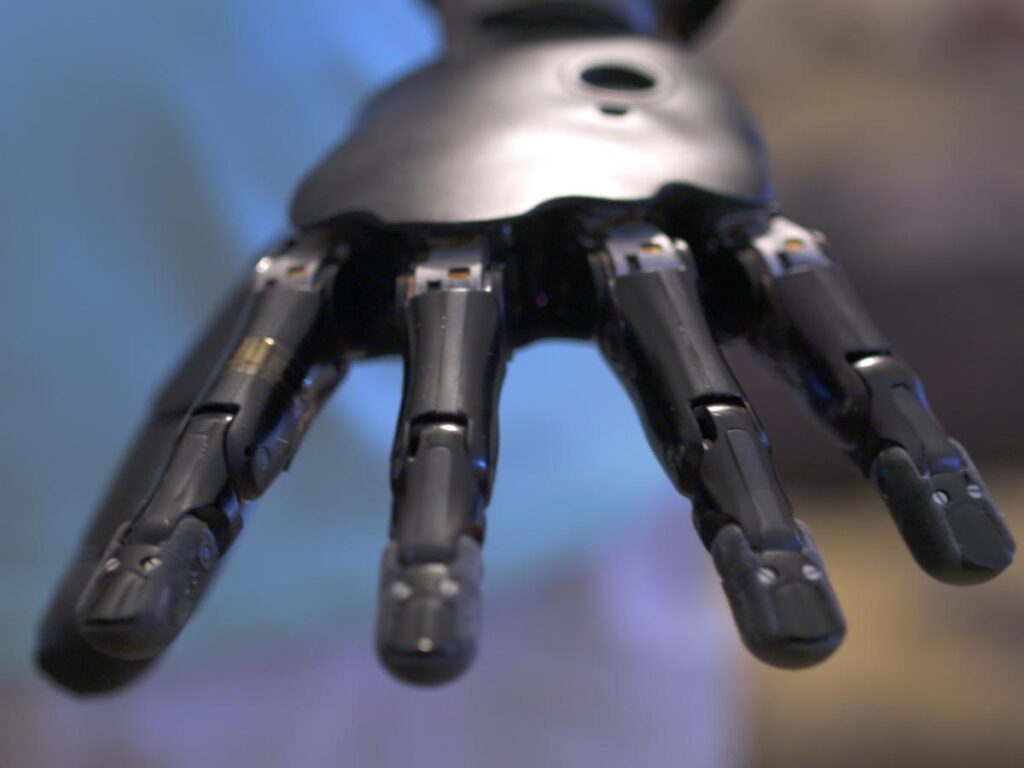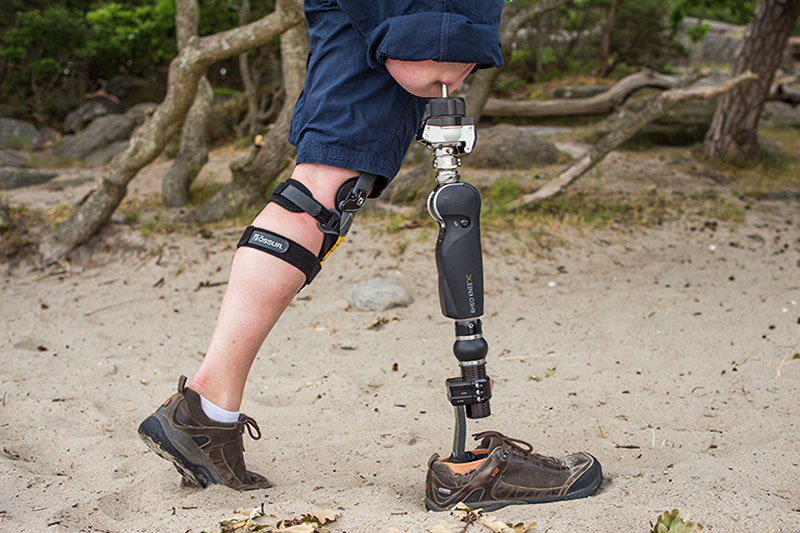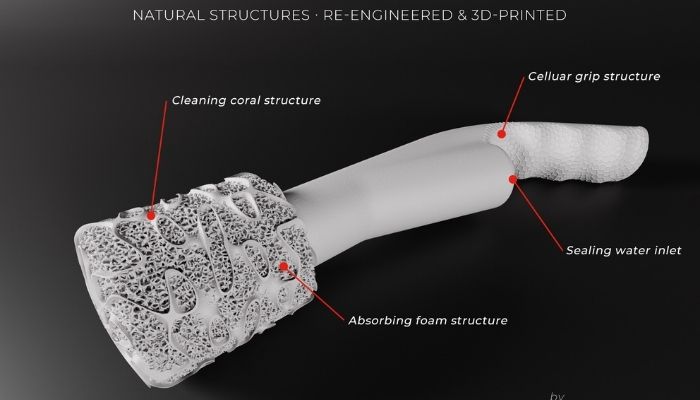Faster? Stronger? More powerful? Human minds have been captivated by the potential of bionic bodies for centuries. Technology advances have been driven by the idea of building a ‘better human’ through the use of technology, from bumbling Inspector Gadget to the near indestructible Terminator.
First used in the 1960s, the term bionics refers to systems of cellular reproduction. Life is defined by ‘bio’, while electronics is described by ‘nics.’ Biological systems, and parts thereof, are studied as mechanical systems controlled by living organisms.

As an alternative to missing body parts that may have been lost due to congenital defect or trauma, artificial limbs are called prostheses. An individual’s options for prosthetics depend on the type of amputation, the location of the missing limb, and the cause.
In 600 BC, basic artificial limbs were already being used. Although the primitive replacements restored some movement and function to the wearer, they were uncomfortable, cumbersome, difficult to use, had poor functionality, and were unattractive.
Scientists today are looking for ways to make appliances lighter, smaller, more controlled, better looking and more affordable. Unlike previous generations of prosthetic limbs, today’s prosthetics combine fields as diverse as electronics, biotechnology, hydraulics, computing, medicine, nanotechnology, and prosthetics. A field of applied interdisciplinary science known as biomechatronics integrates mechanical elements and devices into biological organisms, such as skeletal structures and neural networks.
Prosthetic external limbs
The breakthroughs in material science as well as technology have greatly advanced prosthetic limbs. Researchers currently are trying to recreate human functionality and range of motion by using robotic limbs, which could create an illusion that these limbs give the wearer some kind of superhuman edge, but in reality they’re just trying to recreate how healthy limbs function. Compared to what it sounds like, this is not an easy task.

Imagine yourself scratching your nose if itchy. However, it’s important to think about what you do in order to accomplish this. You need to raise your forearm in a way that your elbow is bent close to your nose, then bend your elbow and raise your forearm to the correct position. Once you’ve rotated your forearm to the appropriate angle, move your finger up and down repeatedly until you feel it on your nose. Throughout this process, you must apply just enough pressure to stop the itching, without scratching the skin. A robotic limb that can seamlessly carry out all these tasks is quite challenging, so you can imagine how challenging it is to create one.
Giving a high five or climbing the stairs might seem like straightforward actions, but your brain is always working behind the scenes (or inside your head) to help you perform even the simplest actions. These tasks require seamless coordination between neurones, muscles, synapses, and brain cortexes.
Researchers around the world have been working to recreate this interaction between thought, action and response with bionic technology.
The development of bionic prosthetic limbs is starting to emulate some functional aspects of the original limbs lost to an accident. Another is still in the experimental stage, but it shows great promise. Here are a few of them:
1. Myoelectric limbs
In the past, prosthetic arms were powered by body movement, which manipulate cables that move the prosthetic limb. It is cumbersome, unnatural and physically tiring.
Electrical power is provided by an external power source, and movement is controlled by a battery and an electronic system. Suction technology is used in order to attach prostheses to residual limbs.

Upon secure attachment, it uses electronic sensors to detect even very small electrical activity within the remaining limb, as well as muscle activity, nerve activity, and brain activity. Microprocessors use this information to control the movements of the artificial limb by amplifying the muscle activity and transmitting it to the skin surface.
A limb moves and acts just like a natural appendage when it receives physical and mental stimulation from a user. Several aspects of the bionic limb can be controlled by varying the intensity of the movement of the user’s existing functional muscles. Switches with a rocker, pull-push mechanism or touch pad can be used to control the prosthesis if muscle signals are not possible. Users are able to perform tasks like opening a door with a key or pulling out a wallet with the help of sensors and motorized controls, resulting in an improvement in dexterity.
The Autograsp feature of the technology automatically varies tension when it detects a change in circumstances (such as filling a glass with water while holding it). Myoelectric limbs have the added benefit of replicating the appearance of a natural limb like traditional devices powered by the body.
This technology has a few disadvantages, including it being heavy, expensive, and taking a bit longer to process a command after the user sends it than it takes for the computer to react to it.
2. Osseointegration
The concept of osseointegration (OI) has also enabled bionic limbs to become more functional. A composite implant is made by directly contacting living bone with a synthetic surface, commonly made from titanium, and then integrating those elements together.
An implant with titanium skeleton is connected to an external prosthetic limb through a hole in the residual limb (stoma) and was first performed in 1994. The direct connection between the prosthesis and bone has several advantages:

- It provides greater control and stability, allowing less energy to be expended.
- The suspension is not dependent on suction, so it is more convenient and easier to use.
- A traditional prosthesis can cause degeneration and atrophy that may accompany weight-bearing on the femur, hip joint, tibia, or other bone. A weight-bearing prosthesis can reduce this risk.
Two operations are traditionally required for the procedure. Titanium implants are inserted into the bone and soft tissues are often revised as a result of this procedure. Following the first phase, the stoma will be refined and the hardware needed to connect the implant to the external prosthetic leg will be attached. The implanted titanium is slowly surrounded by bone and muscle, creating a bionic leg that functions. It takes only a few seconds to attach and remove the external prosthesis from the abutment. Previously, the surgery was performed in a single operation by an Australian surgeon Munjed Al Muderis.
A direct attachment of the prosthesis to the bone allows for a greater range of movement, greater control, and in some cases, the ability to differentiate between surfaces (such as carpet versus tiles) via osseoperception.
The pre- and post surgery procedure must incorporate gait-training, strengthening and rehabilitation. It has been reported that many patients made full recovery from the operations through the new technology and are now able to live a normal life again.
The introduction of porous metal products, such as titanium foam, continues to evolve in the field of OI. The traditional OI designs meant for the femur did not work well on the tibia due to its spongy architecture. However, the application of OI to transtibial amputees has now been extended thanks to titanium foam technology. Prof. Al Muderis developed a foam surface implant that is safely used in amputees with transtibial amputations. Metal foams printed in 3D may promote and contribute to the infiltration of bone and the growth of vascular systems within the defined area. By allowing osteoblast activity to begin, the porous metal foam mimics bone.
Many of those who have undergone OI say the experience is almost as real as it looks. The disadvantages of this type of prosthesis are that it is very expensive (generally over A$80,000), and is not appropriate for a wide range of amputees.
Bionic limbs that can be controlled with the mind

In the future, mind-controlled bionic limbs will be a major advancement in bionic limb technology. The prostheses can be implanted within the nervous system and other body tissues. As a result, they closely mimic normal functions and movements, while also triggering the desired movement more instantly and with less delay, as they are able to respond to commands from the neurological system. The research and development phase is currently occupied with a number of different procedures and technologies.
Re-energizing specific muscles
An artificial limb can be controlled with the neural impulses that once controlled flesh and blood after an amputation, in a procedure known as targeted muscle reinnervation. Reattaching nerves that control joint movement from the missing part of the limb into surrounding muscle tissue will allow the residual limb to control the prosthesis more naturally, similar to myoelectric control. By connecting the brain to the prosthesis, motors move the limb through a computer that is linked to the brain.

The technology was used for the first time by Les Baugh, an amputee who had bilateral shoulder disarticulation (through the joint). The procedure he developed with researchers at Johns Hopkins University could modify how prosthetic limbs are designed, developed, and used.
Over a period of months, there were numerous steps involved:
- Les underwent muscle reinnervation surgery. This is a process that reassigns nerves that controlled the hand and arm. As a result of reassigning the existing nerves, Les was able to think about the action that he wanted his prosthetic limbs to perform and the limbs would respond as he thought.
- When Les recovered, he received training in the technology’s pattern recognition component. A pattern recognition algorithm identifies a muscle’s action, as well as its amplitude and frequency, the way it contracts and communicates. Using this data, the prosthesis can be designed to perform the movement.
- Les’s torso and shoulders were fitted with a brace. It enables neurological connections with the muscles reinnervated by the prosthetic limbs.
- With the help of a virtual integration environment, Les completed further training for the limb system.
- Les was able to start moving various objects with his newly attached limbs, after they were attached to the brace.
Les impressed researchers with the speed at which he was able to use the technology, particularly his ability to simultaneously control both arms with one hand, a first for bimanual control.
“
Revolutionizing Prosthetics Principal Investigator, Michael McLoughlinI think we are just getting started … There is just a tremendous amount of potential ahead of us, and we’ve just started down this road. And I think the next five to 10 years are going to bring phenomenal advancement.“
Patients who underwent this procedure also experienced another unexpected result: they can feel some sensation from their new limbs as well as move them.
Sensors with embedded myoelectric technology
Improved technologies benefit more than just arms. The implanted myoelectric sensor (IMES) technology used by Icelandic researchers is used to create a mind*controlled prosthetic leg. In contrast to nerve reinnervation, no nerve tissue needs to be transplanted from one part of the body to another in order to carry out this procedure. In the IMES technology, sensors are implanted into the skin via small, 1 centimetre-long incisions. The implant takes only 15 minutes to complete. It is not necessary to replace the sensors unless they become damaged once inserted.

The surgeon who performed the surgery, Thorvaldur Ingvarsson, completed the procedure by describing this technology: “It makes using a prosthesis more intuitive and integrative… Because their unconscious reflexes are converted automatically into myoelectric impulses, which control their bionic prostheses, they no longer have to think about their movements.”
Gudmundur Olafsson, one of the participants, said that he took 10 minutes to get control of the machine once he placed his foot on it. As I stood up and walked away, I could… ‘It was like this, I was moving it with my muscles and nothing else was doing it, it wasn’t the foot I was moving, so it was weird and overwhelming.’
This technology is exciting because it can be fitted relatively easily (no complex surgery is required), works well in ‘real life’ scenarios and can last for a long time.
Research conducted by the US Defense Advanced Research Projects Agency (DARPA) in 2015 showed that physical sensations are felt by paralysed individuals who are fitted with prosthetic robotic hands that are directly connected to their brains. He was able to identify, while blindfolded, which fingers of his prosthetic hand were touched and when.
“We’ve completed the circuit … Prosthetic limbs that can be controlled by thoughts are showing great promise, but without feedback from signals travelling back to the brain it can be difficult to achieve the level of control needed to perform precise movements. By wiring a sense of touch from a mechanical hand directly into the brain, this work shows the potential for seamless bio‐technological restoration of near‐natural function.”
DARPA program manager, Justin Sanchez
Commercialization of the technology is still years away, but it’s clear there’s a lot of potential.
Even the most sophisticated prostheses still do not replicate the full functionality of natural limbs, but technological advances have made these artificial limbs more practical.
Improvements in cosmetics
Using 3D printing and computer-aided design, limbs can be created that are a perfect custom*fit for the wearer and should become more affordable as technology progresses.

Scientists are working hard to create bionics that look more realistic than ever before, even though many of the new devices look like something out of a science*fiction movie. Now, prostheses can be designed to accurately imitate the wearer’s form and incorporate details such as accurate skin colour, freckles, birthmarks, hair, veins, tattoos, fingerprints, and fingernails. PVC or silicones are used for these life-like creations that are used to cover the prosthetic limb, using adhesives, stretchable skins, suction, or a skin sleeve. Amputees often find it very important to have limbs that don’t attract unwanted attention.
Final thoughts
Human beings are made of what? Were we born this way? What about our brains? How do we feel? What do you mean by intangibles? The ever-shrinking boundaries between human and machine are likely to require us to rethink our notions of what it means to be human in the future.
Although we would like to envision a future populated by cybernetic enhancements, at present bionic limbs mostly serve medical purposes, providing people who are missing limbs with a higher level of quality of life. Even though bionic limbs may seem impressively futuristic, they have not yet been able to completely replicate the range of motion, function, and complexity of human limbs.




